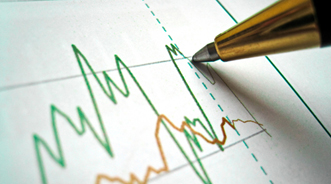TransUnion: Average Canadian Consumer Debt Levels Surpass $27K for First Time Ever; Auto Borrower Debt on the Way Up

Canadian debt levels continued to creep up in the last quarter of 2012. In fact, TransUnion's quarterly analysis of Canadian credit trends found that the average consumer's total debt (excluding mortgage) increased nearly 6 percent from $25,960 at the end of 2011 to $27,485 in Q4 2012.
“The year-over-year increase was the largest of its kind for a fourth quarter since 2009,” the company reported.
On a quarterly basis, national debt levels rose 2.7 percent — the largest such increase between the third and fourth quarters since 2008.
Commenting on these high levels, Thomas Higgins, TransUnion's vice president of analytics and decision services, said there’s no cause for alarm.
“Increases in personal debt are not surprising during the final quarter of the year as consumers tend to spend more during the holiday season. The rise on a year-over-year basis should be more concerning as Canadians' debt loads increased by more than $1,500,” he explained.
For auto borrower debt, in particular, this segment also saw a significant rise as 2012 came to a close.
Canadian auto borrower debt (defined as the aggregate balance on all auto captive loans for an individual auto captive borrower) increased 8.93 percent year-over-year, “the first single digit increase in a year and only 0.61 percent quarter over quarter,” officials added.
As of Q4 2012, average consumer debt for auto captives sat at $19,345.
As for the increase in average debt, these numbers were consistent throughout the nation, with all provinces experiencing increases except for British Columbia, which saw a drop of 0.09 percent.
On a year-over-year basis, the largest increases were found in Alberta (11.20 percent), Quebec (9.39 percent) and Prince Edward Island (9.04 percent).
“Balance changes were as expected, though British Columbia's drop was the most eye-opening observation from the data,” Higgins said. ”It should be noted, though, that British Columbia has the highest debt levels in the nation.”
Though debt levels across all product categories — credit card, lines of credit, installment loans, and automotive — saw increases, TransUnion explained that delinquency levels continue to remain low across all major product categories.
That said, auto delinquency rates did see a slight rise from Q3 of last year.
Specifically, auto captive delinquency rates sat at 0.10 percent in Q4 2012, which marks a 5.3-percent increase from
Q3 of last year.
Sarah Rubenoff can be reached at srubenoff@autoremarketing.com. Continue the conversation with Auto Remarketing Canadaon LinkedIn and Twitter.


